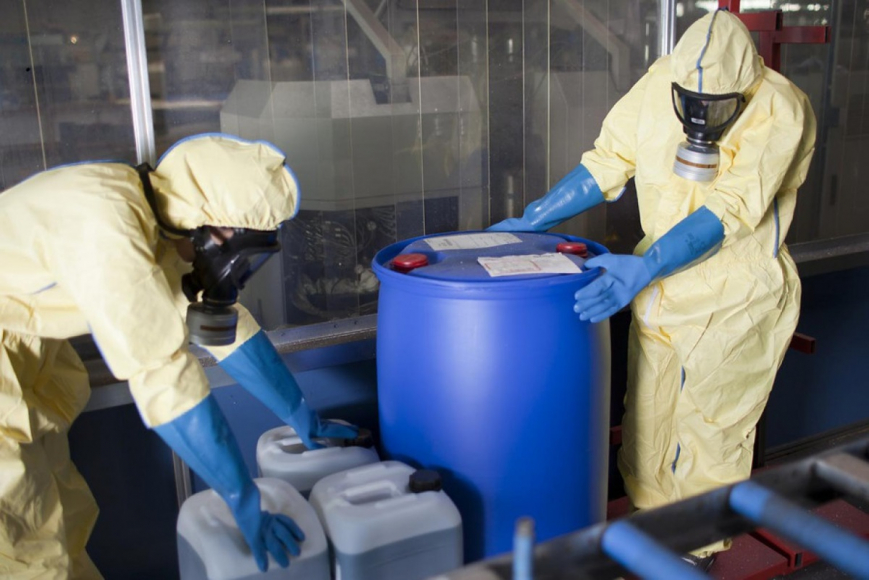The regulations covering generators of hazardous waste under the Resource Conservation and Recovery Act (RCRA) were initially promulgated in 1980. The Environmental Protection Agency (EPA) began a comprehensive review of the regulations in 2004, almost a quarter-century later. The new regulations, proposed in September 2015, make over 60 changes and technical corrections that, according to the EPA, address “gaps in the regulations, provide greater flexibility for hazardous waste generators to manage their hazardous waste in a cost-effective and protective manner, and reorganize the hazardous waste generator regulations to make them more user-friendly and thus improve their usability by the regulated community.”
The regulations became effective in Alaska, Iowa, American Samoa, Northern Mariana Islands, Puerto Rico, and the Virgin Islands on May 30. All states must revise their hazardous waste regulatory programs by July 1, 2018. At the time this article was written, New Jersey and Pennsylvania have adopted the regulations.
Who is Affected?
- Up to 591,800 very small quantity generators (VSQGs) -- generating less than 100 kilograms (kg) of non-acute hazardous waste and/or 1 kg or less of acute hazardous waste per month
- Up to 64,300 small quantity generators (SQGs) -- generating more than 100 kg but less than 1,000 kg of non-acute hazardous waste and/or 1 kg or less of acute hazardous waste per month;
- About 20,800 large quantity generators (LQGs) -- generating more than 1,000 kg of non-acute hazardous waste and/or 1 kg or more of acute hazardous waste in a calendar month.
What Changed?
- Recognize episodic generation of waste for those limited times when a facility’s waste generator rate can put it into a higher, more heavily regulated, generator status. This is a significant change that recognizes the unpredictable nature of some business’s waste generation rates. Once a year a SQG or VSQG could exceed the respective regulatory generation limits of 1,000 kg and 100 kg, respectively, without being required to move into a higher category.
- Allow VSQG’s to send hazardous waste to LQGs that are under control of the same parent entity. According to the EPA, generators could realize cost savings through reduced operating costs to the company, reducing environmental liability by managing wastes according to the highest level regulatory regime for LQG’s, promoting recycling, and reducing the likelihood of hazardous waste being sent to municipal waste facilities. Modern logistics and supply-chain operations using “take back” or “reverse distribution” facilities could be streamlined.
- Strengthen the existing requirement to classify waste streams as either hazardous or not hazardous, and to maintain records to support the classification of each waste stream. The rule clarifies that the determination must be made at the point of generation, before dilution, mixing, or other alteration occurs. While the EPA chose to exclude some proposed stringent record keeping provisions, the final rule provides examples of the types of tests and records that must be kept.
- Require re-notification of generator status every four years. The EPA notes that databases on hazardous waste generator activities can become stale and inaccurate over time. Periodic disclosure of hazardous waste activities will allow them to maintain accurate records of facility generator status and the types of waste under management.
- Add additional labeling requirements and hazard information to existing shipment procedures.
- Revise the regulations for labeling and marking of containers, tanks, drip pads, and containment buildings when accumulating hazardous wastes to include specific hazards of the contents and the risks the wastes might pose to human health and the environment. The intent is to communicate to employees, transporters, downstream handlers, emergency personnel, and agency personnel as much information as possible about potential exposure hazards. Any one of the existing hazard communications methods used by DOT or OSHA would be acceptable under the new rule.
Turning Change into Opportunity
Companies that generate small and very small quantities of hazardous waste may want to give serious consideration to revisions that actually offer less stringent alternatives. To enjoy the maximum benefits these relaxed standards offer, VSQG’s and SQG’s would need to change some of their operating practices and report more of their activities to the agency.
By having the ability to consolidate waste materials from multiple VSQG sites at a central LQG operation, a company can realize savings. This could include:
- Better disposal cost terms negotiated with a waste vendor, who would need to make a stop only at the LQG. Waste consolidation practices would also reduce the number of partially-filled containers and operating costs and disposal fees.
- Less need for specialized hazardous waste management staff, detailed waste contingency plans, and substantial record keeping and reporting requirements, since these would be required only at the LQG facility.
- Streamlined implementation of reverse logistics operations and the ability to transport waste back to a central LQG, continuing a trend toward regulatory agencies recognizing this practice.
By planning episodic events, a generator could reduce its RCRA generator waste category and be subject to reduced regulatory requirements. Events that result in irregular spikes in waste generation volume (tank cleaning, maintenance activities, chemical inventory adjustments) can be scheduled during a single episodic event when the facility could temporarily exceed its category limit by a significant amount. Advantages to this approach include:
- More assurance that monthly waste generation rates will not fluctuate;
- Decreased regulatory burdens for management, record keeping, and training;
- The ability to negotiate favorable waste disposal rates during the planned episodic event.
Should a generator wish to take advantage of these relaxed standards (both are voluntary), there are some additional requirements to inform the agency of episodic events and manage the waste generated during the event.
Contact us today for information or clarification about the rule changes, or to arrange a comprehensive analysis of your company's current waste management program.
Want more news and insights like this?
Sign up for our monthly e-newsletter, The New Leaf. Our goal is to keep you updated, educated and even a bit entertained as it relates to all things EHS and sustainability.
Get e-NewsletterHave any questions?
Contact us to discuss your environment, health, safety and sustainability needs today.



